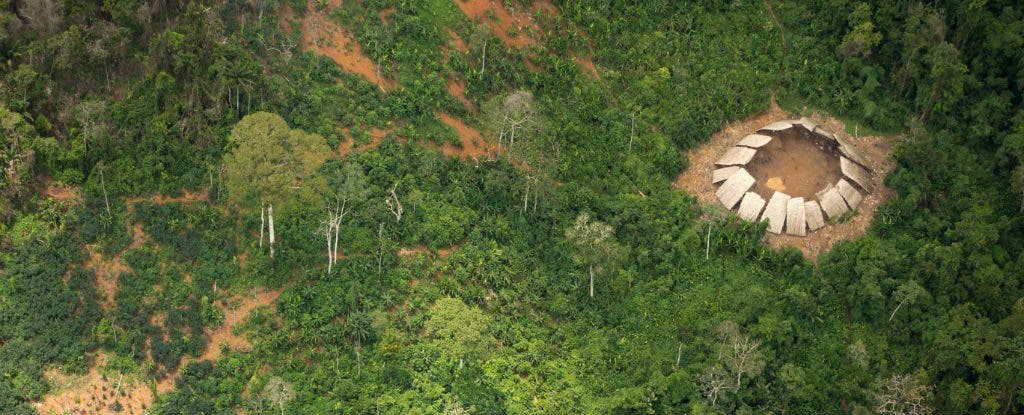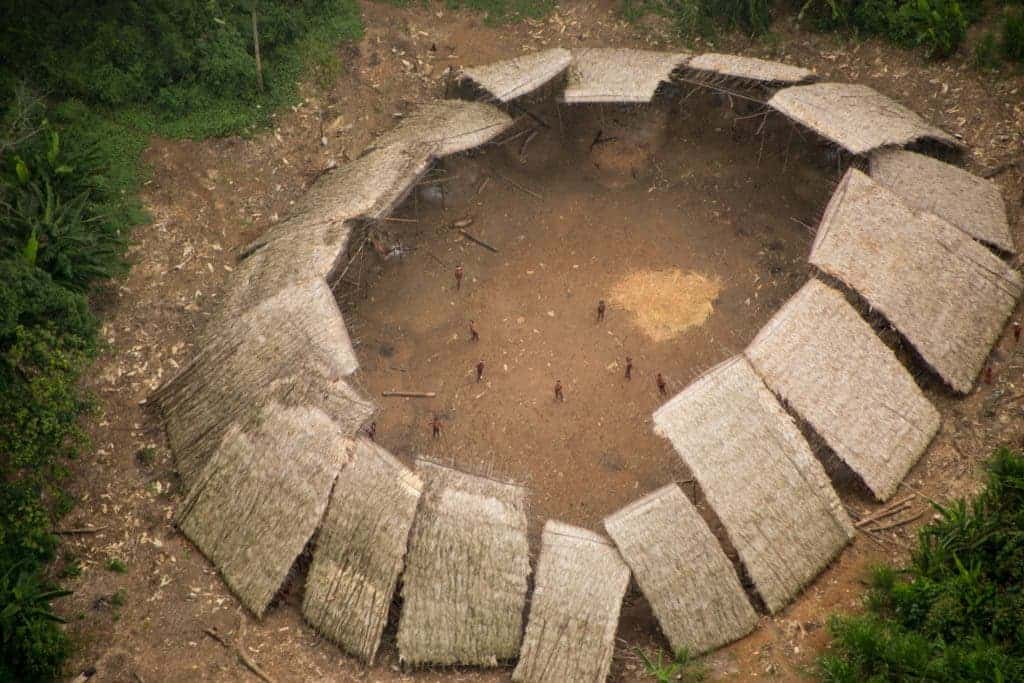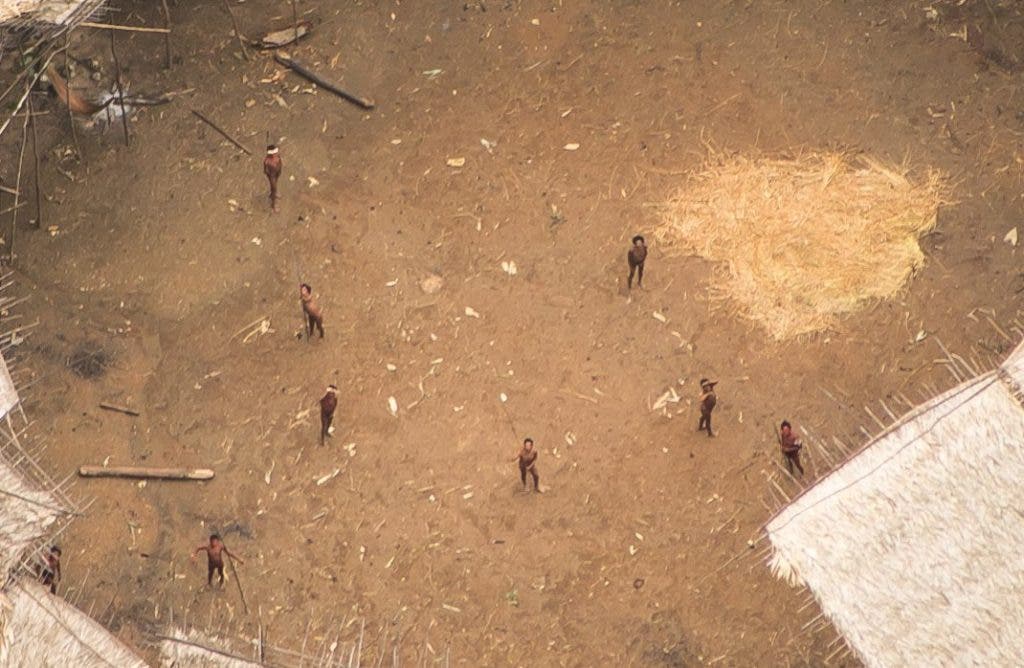Spectacular images of an uncontacted tribe in the Amazon have emerged, but conservationists and indigenous populations fear that the villagers are in grave danger.

The Yanomami tribe are a group of approximately 35,000 indigenous people who live in some 200–250 villages in the Amazon rainforest, close to the border of Venezuela and Brazil. Covering over 9.6 million hectares, the Yanomami territory in Brazil is twice the size of Switzerland. They’re scattered in autonomous groups, many of which remain uncontacted and isolated from modern life to this day. The Moxihatetema, inhabitants of this particular village, have refused contact with outsiders – even other Yanomami communities.
Good news…
The new airborne pictures depict people in a communal “yano” structure, the round structure you can see here in which they all live. According to National Geographic, the pictures were taken in mid-September by officials from Brazil’s indigenous affairs agency, Fundação Nacional do Índio (FUNAI) on a surveillance flight over the reserve in the run-up to a joint operation with army troops and police agents to clear out thousands of wildcat gold miners. Initially, there was good news emerging with the photos.
“It’s incredible that they appear to be doing so well,” Guilherme Gnipper, the FUNAI agent who took the photographs, told National Geographic by phone from his home in Boa Vista. “Their gardens are huge, the people appeared to be healthy. But the gold strike is getting closer and closer.”
Villagers showed no fear of the aircraft, making no effort to hide or attack it. Their isolation is clearly visible in their lack of any industrial goods – they are devoid of even cloth, pots, or machetes.
“We saw no manufactured products whatsoever,” says Gnipper. “Nothing made of metal. They are living well—in complete isolation. It was like time travel.”

Survival International, a human rights organisation formed in 1969 that campaigns for the rights of indigenous tribal peoples and uncontacted peoples, opposes the prospect of any contact with the community. They feel that these images show just how successful these populations can be, despite the isolation. Survival’s Director Stephen Corry said:
“These extraordinary images are further proof of the existence of still more uncontacted tribes. They’re not savages but complex and contemporary societies whose rights must be respected. It’s obvious that they’re perfectly capable of living successfully without the need for outside notions of ‘progress’ and ‘development’.”
… and bad news
The same village had been observed a few years ago, but in a different location. They have moved, and unfortunately, they’ve moved closer than ever to mining operations. This is giving reason for serious concern.
“I am very concerned about my brothers, the Moxihatetema,” says Davi Kopenawa, a tribal shaman and president of the Hutukara Yanomami Association, which represents the estimated 22,000 Yanomami who live within the boundaries of the Brazilian reserve. “The place where the uncontacted Indians live, fish, hunt and plant must be protected. The whole world must know that they are there in their forest and that the authorities must respect their right to live there,” he said.
Illegal mining operations of various scales abound in the area, and miners aren’t shy of bullying, beating, or killing locals. As the Independent reports, in 1993, a year after the Yanomami territory was officially recognized, 16 indigenous people, including a baby were killed by miners, and their village was burned to the ground.

According to Kopenawa, we may see the same thing happening again. He says that miners “are like termites – they keep coming back and they don’t leave us in peace”. According to him, groups of prospectors are already discussing a violent raid on the village. “I’m afraid the miners are going to seek out the village and kill everyone,” he told Nat Geo. Mix that with diminishing funds for indigenous protection, and you might end up with a recipe for disaster.
“Funai closed its field base in this region last year, effectively abandoning the Moxihatetema to their own fate,” Fiona Watson of Survival International told Jonathan Watts at The Guardian.
This is why, with these photos, researchers hope to raise more awareness about these populations and the struggles they are facing. Not internal struggles, but threats brought from the exterior. Aside from physical violence, intruders can also bring numerous diseases to locals.
Corry concludes:
“All uncontacted tribal peoples face catastrophe unless their land is protected. We’re doing everything we can to secure their land for them, and to give them the chance to determine their own futures.”



